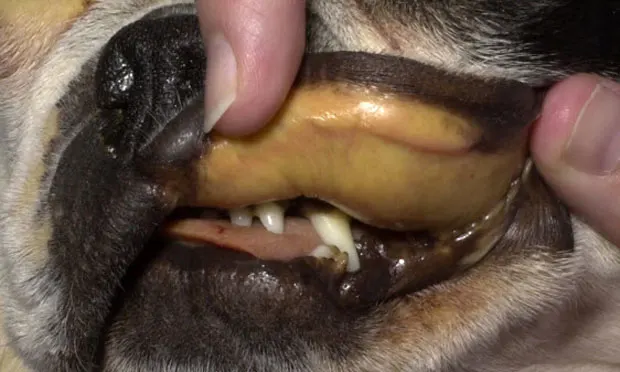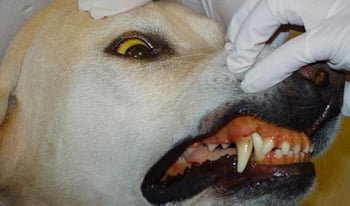Why Leptospirosis Is Important to Know
Leptospirosis, often shortened to “lepto,” is a serious bacterial disease that affects dogs, wildlife, livestock, and even people. It’s caused by a group of bacteria called Leptospira, which thrive in warm, wet environments.
Lepto is especially concerning because it is zoonotic — meaning it can spread from dogs to humans. In both, it can cause liver and kidney damage, fever, and sometimes death if not treated quickly.
How Dogs Catch Leptospirosis
Dogs usually get infected by coming into contact with water, soil, or food contaminated with urine from infected animals (rats, raccoons, livestock, and others).
They can be exposed by:
- Drinking from puddles, ponds, or streams.
- Walking through contaminated water or mud with small skin cuts.
- Contact with urine from infected animals.
- Living in warm, humid areas with lots of standing water.
Symptoms of Leptospirosis in Dogs

Lepto symptoms can be mild at first but can progress quickly. Watch for:
- Sudden fever and chills
- Muscle tenderness and reluctance to move
- Lethargy (extreme tiredness)
- Vomiting and diarrhea
- Loss of appetite
- Increased thirst and urination (kidneys being affected)
- Yellow gums or skin (jaundice, a sign of liver problems)
- Breathing issues in severe cases
In advanced cases, dogs may collapse suddenly or develop kidney and liver failure.
Diagnosis
Vets may use:
- Blood tests and urine samples to detect Leptospira bacteria or antibodies.
- Kidney and liver function tests to assess organ damage.
- Sometimes multiple tests are needed, since early lepto can resemble other illnesses.
Treatment
Leptospirosis can be treated successfully if caught early.
- Antibiotics (doxycycline, penicillin, or others) are used to kill the bacteria.
- IV fluids and supportive care help prevent dehydration and protect the kidneys.
- Medications may be given to control nausea, diarrhea, or pain.
- In very severe cases, dialysis may be needed to support failing kidneys.
Early treatment often leads to a good recovery. Delayed treatment increases risks of organ failure or death.
Caring for a Dog With Leptospirosis
Because it is contagious, extra care is required.
Home Care and Safety Checklist:
- Isolate your dog from other pets during recovery.
- Wear gloves when cleaning up urine, vomit, or feces.
- Disinfect surfaces with diluted bleach (1 part bleach to 10 parts water).
- Wash hands thoroughly after touching your dog or their environment.
- Follow your vet’s medication schedule precisely — finish all antibiotics.
- Provide clean, easily accessible water and encourage frequent drinking.
Prevention
Prevention is especially important in areas where lepto is common.
- Vaccination:
- Vaccines exist for leptospirosis and are often combined with core vaccines.
- Puppies can start lepto vaccines at 8–9 weeks, followed by boosters.
- Annual boosters may be recommended in high‑risk areas.
- Avoid standing water: Don’t let your dog drink from puddles, ponds, or ditches.
- Rodent control: Reduce rodent populations near your home since they spread the bacteria.
- Clean environment: Regularly disinfect kennels, water bowls, and areas where dogs urinate.
Expectations and Long-Term Results
- With early treatment, most dogs recover well.
- Some dogs may have long‑term kidney or liver problems, requiring special diets or medications.
- Dogs that survive can still shed the bacteria in urine for weeks — which is why isolation and hygiene are so important at home.
How Dangerous Is Leptospirosis?
- Mortality rate varies — mild cases often recover, while severe cases involving organ failure can be fatal.
- Because it can jump to humans, it’s considered a public health risk. People may catch lepto through contaminated dog urine, so safety steps must always be followed.
Fun Facts
- Leptospirosis is more common in tropical and humid climates, but outbreaks can happen anywhere.
- Rats are one of the main carriers, which is why city dogs are also at risk — not just farm or country dogs.
- Lepto is one of the oldest known zoonotic diseases, affecting animals and humans for centuries.
Common Questions
Can my dog give me leptospirosis?
Yes — through contact with infected urine. Always use gloves and disinfect.
How do I know if my dog needs the vaccine?
If you live in or travel to areas with lots of standing water, wildlife, or rodents, your vet is likely to recommend it.
Can dogs get lepto more than once?
Yes. Recovery doesn’t guarantee lifelong immunity — vaccines and prevention are key.
How quickly does lepto become serious?
It can move from mild signs to organ failure very quickly — which is why early vet care is crucial.
Final Takeaway
Leptospirosis is a dangerous bacterial disease that spreads in water and can sicken both dogs and humans. Left untreated, it can cause kidney and liver failure — but with fast antibiotics and good care, many dogs recover fully.
The best way to protect your dog and family is through vaccination, avoiding risky water sources, rodent control, and hygiene. Prevention will always be easier (and safer) than battling a severe infection.

